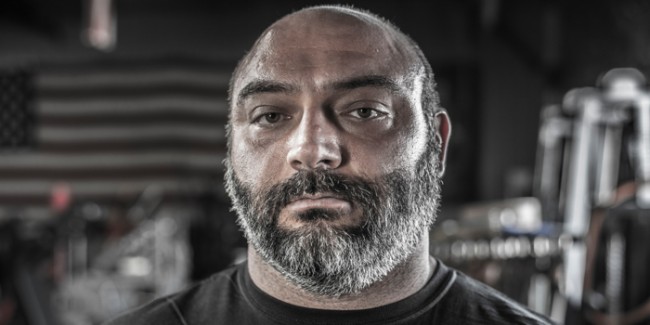
Disclaimer: Most of my articles are going to be real simple. I'm not sure if it’s the multiple concussions from college, but when I learn things, I have to break them down to their simplest form so I can remember and implement them. Some say making things simple is the sign of a good teacher or coach, so maybe I’ll roll with that angle. In the end, I thought this might be a good fit for me on the site: taking complex ideas and stripping them down to bare bones so everyone can use them.
I think there is a big misconception that following a conjugate model requires a very complex system or is only for elite, highly-trained athletes. Hopefully, we can dispel some of those myths and show how simple the system is and how it can be used by anyone in any setting and produce great results.
The original conjugate model was adapted from Russian methods that were used to train multiple sports in the old Soviet Olympic sport training system. It was not invented by Louie Simmons — it was modified and popularized by him. I will, however, say this: most of the time that we steal ideas from Westside, they work very well. Louie has brought to light the use of box squats, chains, bands, reverse hypers, GHRs, three-week waves, circa max, and on and on. While these are all elements that help make the conjugate method a successful system, they are not what conjugate is. They are only tools used within the system. Just because you box squat with chains on the bar does not "make you Westside."
WATCH: Nate Harvey — Training and Coaching with the Conjugate Method
For the purpose of this article, conjugate training will be defined as training multiple special strengths throughout the year by using varying methods within the weekly plan, in an effort to raise multiple traits the entire year as opposed to only during certain blocks of training. The opposite of this would be the old western or linear model of periodization. In order to maximize results, it is important to have some direction to your training and prioritize the traits you are pursuing as your athletes near competition season. As you lay out your athlete’s training, they should always work from general to specific. The simplest way to achieve this and keep it organized is to divide the days up into "lanes." This is a concept Dave mentioned to me on my trip to the compound that really hit home with me. I had always done it like this, but describing each portion of the daily training layout as a "lane" really made this point easy to understand.
In the graph below we lay out the lanes and how to periodize each (download here). This shows lifting only. When you program, there are many factors to consider when working from general to specific. The ones that we focus on are sport duration, energy systems, sport movement, type of contraction, speed of contraction, special strengths required, and recovery modalities. Some of the considerations and examples will repeat. There are no absolute rules when programming your way through each lane. The important part is that you have some reasoning for progressing each the way you do.
Max Effort Upper
Dynamic Effort Lower
Dynamic Effort Upper
Max Effort Lower
Conjugate Lanes Download
I told you it was going to be simple. This should get your programming and your athletes’ training headed in the right direction. Don’t be the strength coach who plays exercise bingo and throws any random exercises into the program without thought and reasoning. And just so we’re clear, "to be more explosive" is not proper justification for any programming decision — EVER!










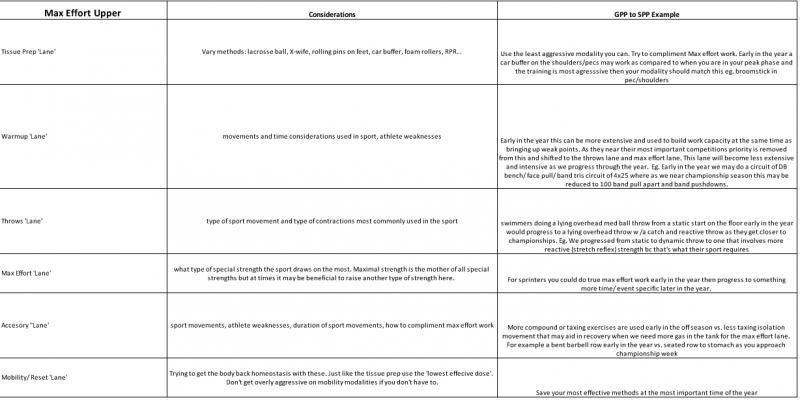
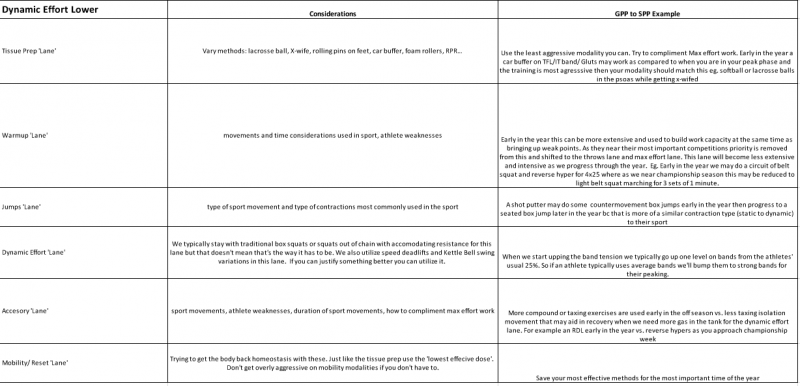
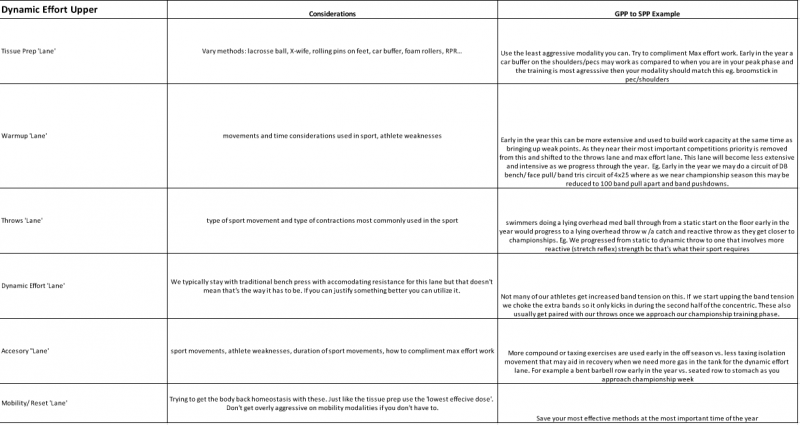
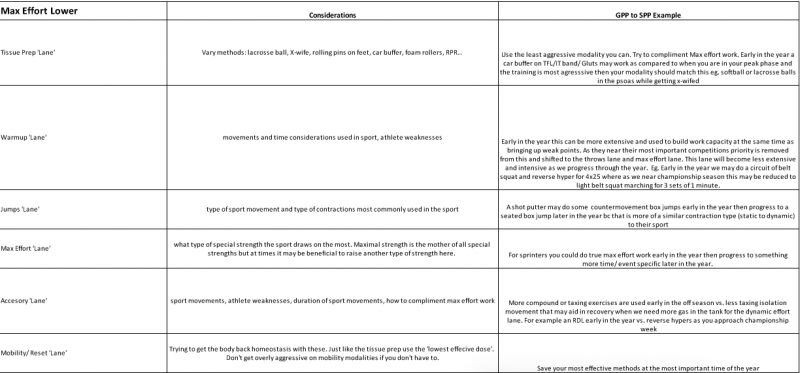
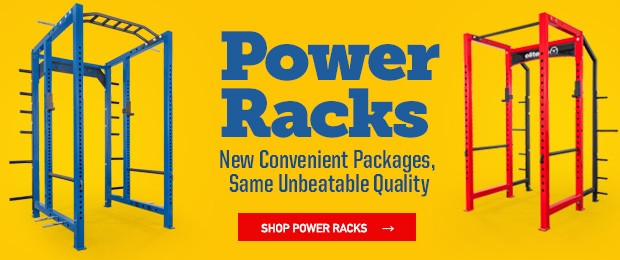
2 Comments